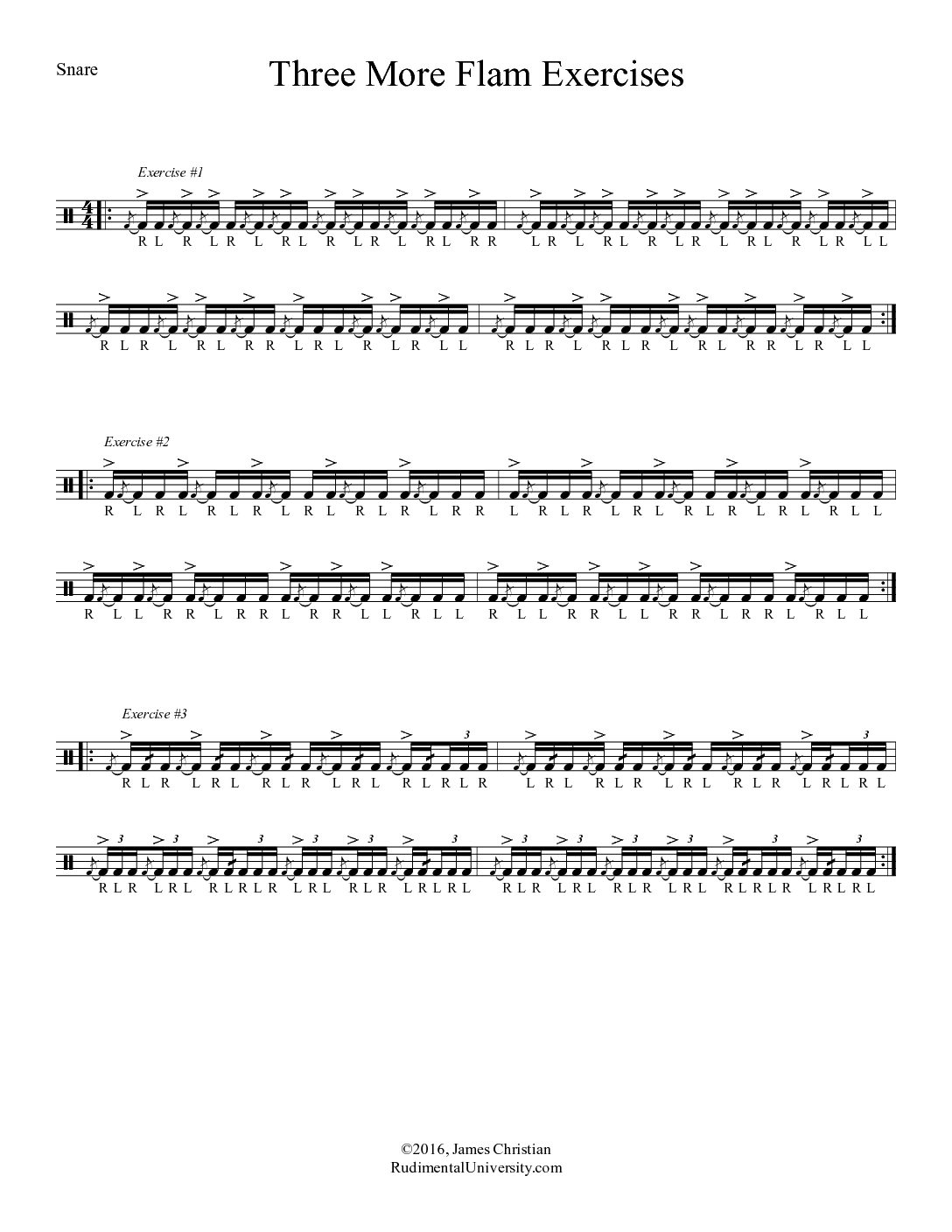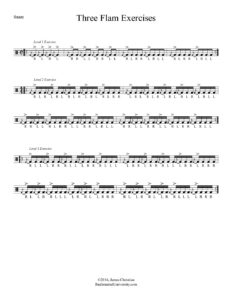
Last time, we looked at three levels of flam exercises. Here are three more, but these are considerably more advanced. They all follow the same accent “skeleton” from the previous set of flam exercises.
The first exercise utilizes rudiments often called triplet pataflaflas (though used as 16th notes in this exercise), flam tap paradiddles, and pataflaflas (that is, the regular kind). A regular pataflafla is a group of four notes with a flam on the first and last note, and a triplet pataflafla is a group of three notes with a flam on the first and last note. A flam tap paradiddle is a normal flam paradidle with a flam on the third note creating a flam tap on the “diddle” half of the paradiddle.
The second exercise is a true coordination challenge. Essentially, the exercise is the same as the Level 2 exercise from last time, but the flams now follow immediately after the accent. The rudiments all fall into the “unofficial hybrid” category, so their names vary from place to place. Some names commonly given to these rudiments are dachudas (or tuchadas) and inverted tap flams. (I’m unaware of a name for a paradiddle with a flam on the second note. If you have a name for it, I’d love to hear it. Please share it in the comments!)
The third exercise uses three fairly common rudiments—flam drags, flam ratamacues, and flam accents. However, the way these rudiments are combined make it difficult to take this exercise very fast. Only advanced players will be able to execute this exercise cleanly at tempos above the 132 bpm range.
Best wishes on learning these! As always, make your accents strong, and keep your grace notes low and controlled!

